Knowledge exchange among stakeholders from different sectors and fieldwork
The PARAWET project “Participatory monitoring, assessment and visualization of climate change vulnerability in coastal wetlands of Peru for decision-making in ecosystem-based adaptation” for the Office for Knowledge Exchange is imbedded within a network of Peruvian stakeholders at the national, regional and local level. In partnership with the Peruvian Ministry of Environment (MINAM) and the German Agency for International Cooperation (GIZ), the objective of the collaboration network is to integrate EbA measures to the strategic planning processes for coastal and marine zones in Peru.
The growing team of PARAWET is active by giving advice, offering consulting services, and engaging and communicating with the project partners, stakeholders and communities on the individual, organizational and societal level. To be successful within such a multisectoral collaboration, it is important that knowledge exchange and capacity development remain at the forefront of our endeavours.
The coastal wetland system located in the arid landscape of the Sechura and Paita provinces in the Piura Region, northwest Peru is characterized as a connection of lagoons, estuaries, and mangroves. Located in a transition zone between the northern edge of the Humboldt Current and the southern end of the tropical eastern Pacific region, these ecosystems are highly productive providing important habitat for migratory birds and other fauna, and ecosystem services for the local communities.
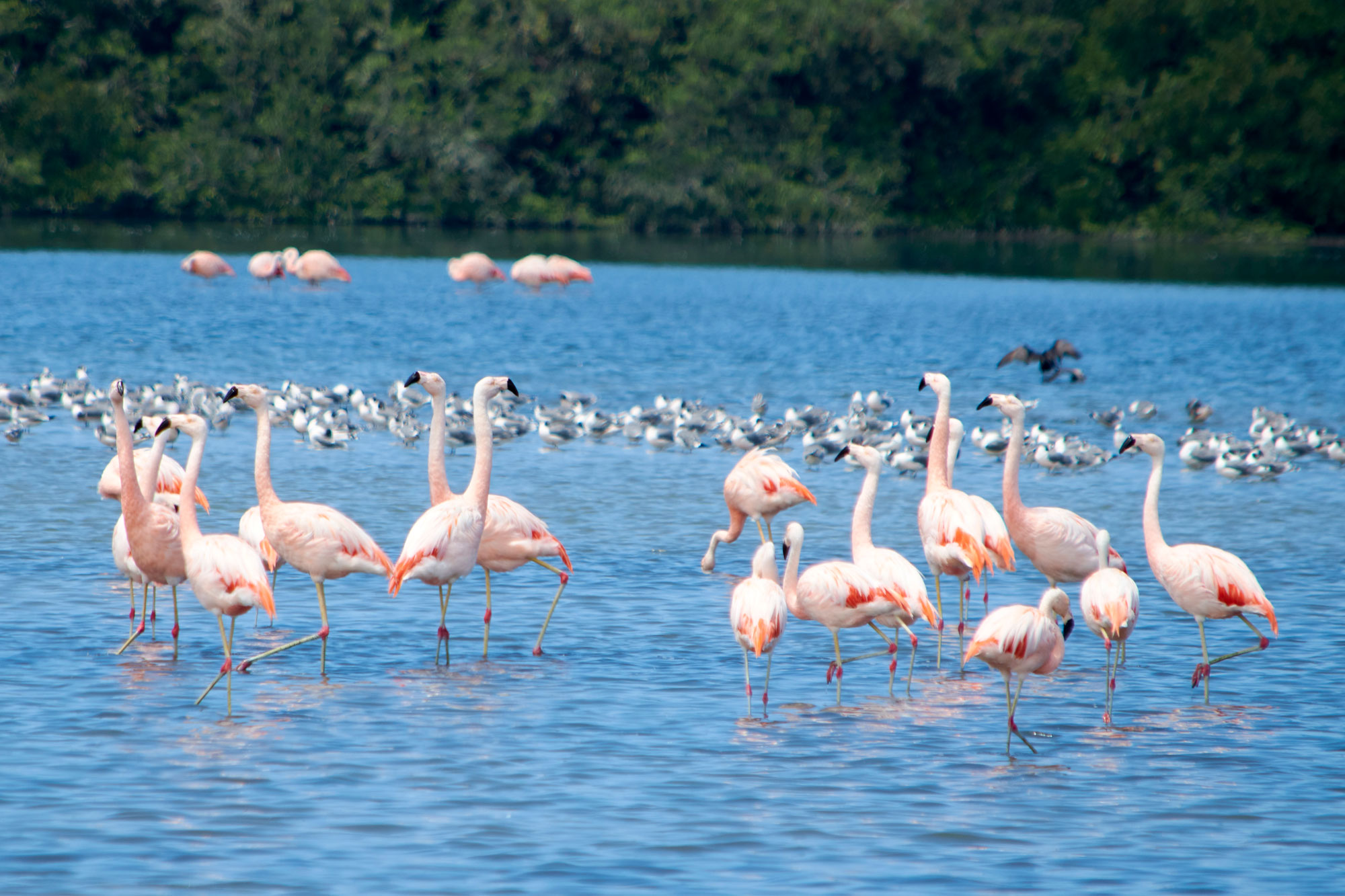
Combining work with bird watching: Flamingos at the mangroves of Chulliyache. Photo: Tim Jennerjahn
A major objective of PARAWET is to support with vulnerability analyses of climate change and participatory monitoring for the coastal wetland system. In the framework of this objective, I will highlight our achievements from our visit in the Piura Region in February 2023. We, (project coordinator Dr. Hanlie Malherbe, senior researcher Prof. Dr. Tim Jennerjahn, consultant Ivonne Vivar, MSc candidate Osarobo Osifo, and doctoral candidate Alonso del Solar) commenced with a three-day workshop. The workshop was designed to exchange knowledge on previous management and research experiences for the region, and to learn from experts in their fields of study and the local users. This was a crucial step to drive collaborative work among the stakeholders.

Stakeholders from different walks of life coming together at the workshop.
Special interest was given to Blue Carbon and its importance in climate change mitigation and adaption by Prof. Dr. Tim Jennerjahn. The Blue Carbon approach defined for the mangroves of San Pedro de Vice and Chulliyache in Sechura, and for Vichayal in Paita was well received. The workshop created an opportunity for a formal collaboration between the ZMT and the National University of Piura (UNP), who will support with mangrove phytoplankton and above ground biomass analyses to be conducted by local students. In addition, we strengthened our understanding of the work done by our project partner, the “Instituto del Mar de Peru” (IMARPE) estimating mangrove biomass changes using remote sensing and drone data.
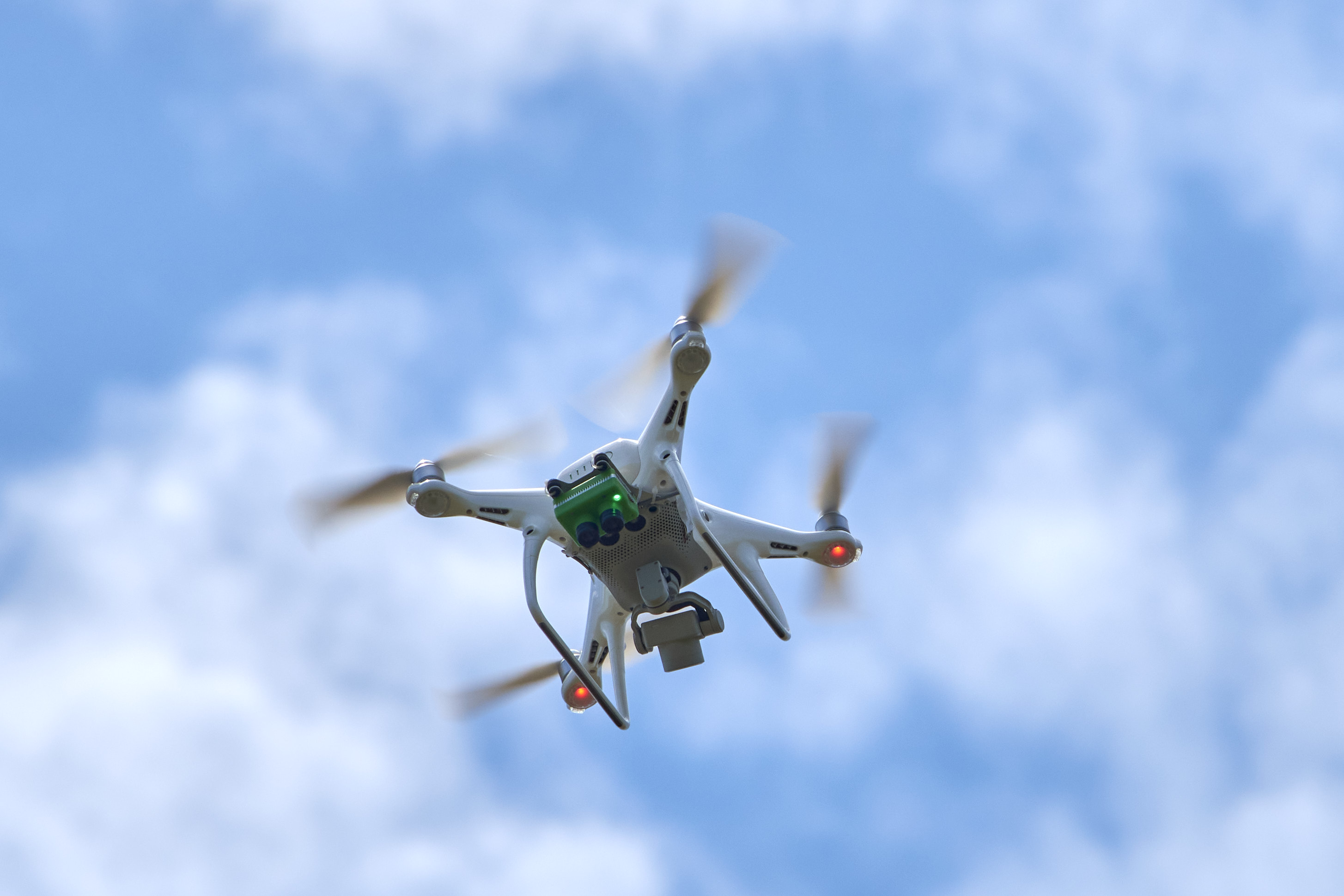
Capturing mangrove drone data by Mario Polar from IMARPE. Photo: Tim Jennerjahn
Another major success of the workshop was the dynamic activity to gain insight from the local users whose well-being depends on the aforementioned mangroves, and Virrilá Estuary and Lake Ñapique in Sechura. A general concern of the local users, among many others, is the long-term impacts that increasing phases of extreme droughts have on their fishing and agricultural activities. From open discussions, their experiences and perceptions of the impacts of climate change, and their adaptation efforts were document for each site.
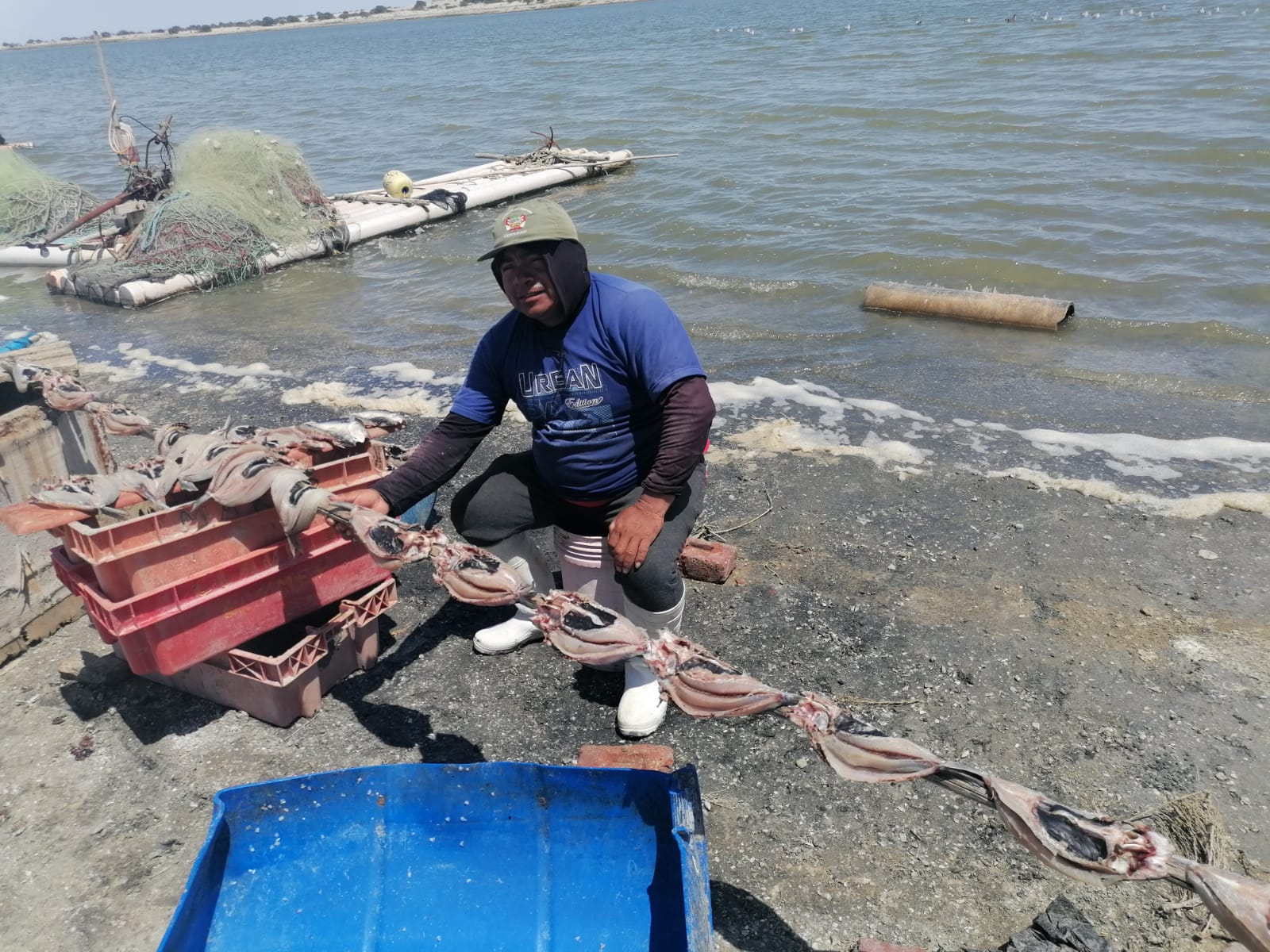
Fisherman at Virrilá Estuary gathering the catch of the day for the local market. Photo: Ivonne Vivar
The knowledge gained will support with conservation efforts and ecotourism development, and addresses the conflicts which arise among the local users from human related changes to the water regime. I am happy to report that the research entities and stakeholders involved are motivated to work together, achieve synergetic research outcomes, and to align these outcomes with decision-making of EbA measures in management planning processes.
After the workshop, we visited the field and successfully collected sediment cores from the mangroves including relevant land use samples. We were not only supported extensively by the regional government and local municipal entities, but we also had the pleasure to be accompanied by Prof. Ronald Wilmer Marcial Ramos and Prof. Humberto Rivera Calle from UNP, who shared their extensive knowledge of the region and provided work space to prepare the samples for final analyses.
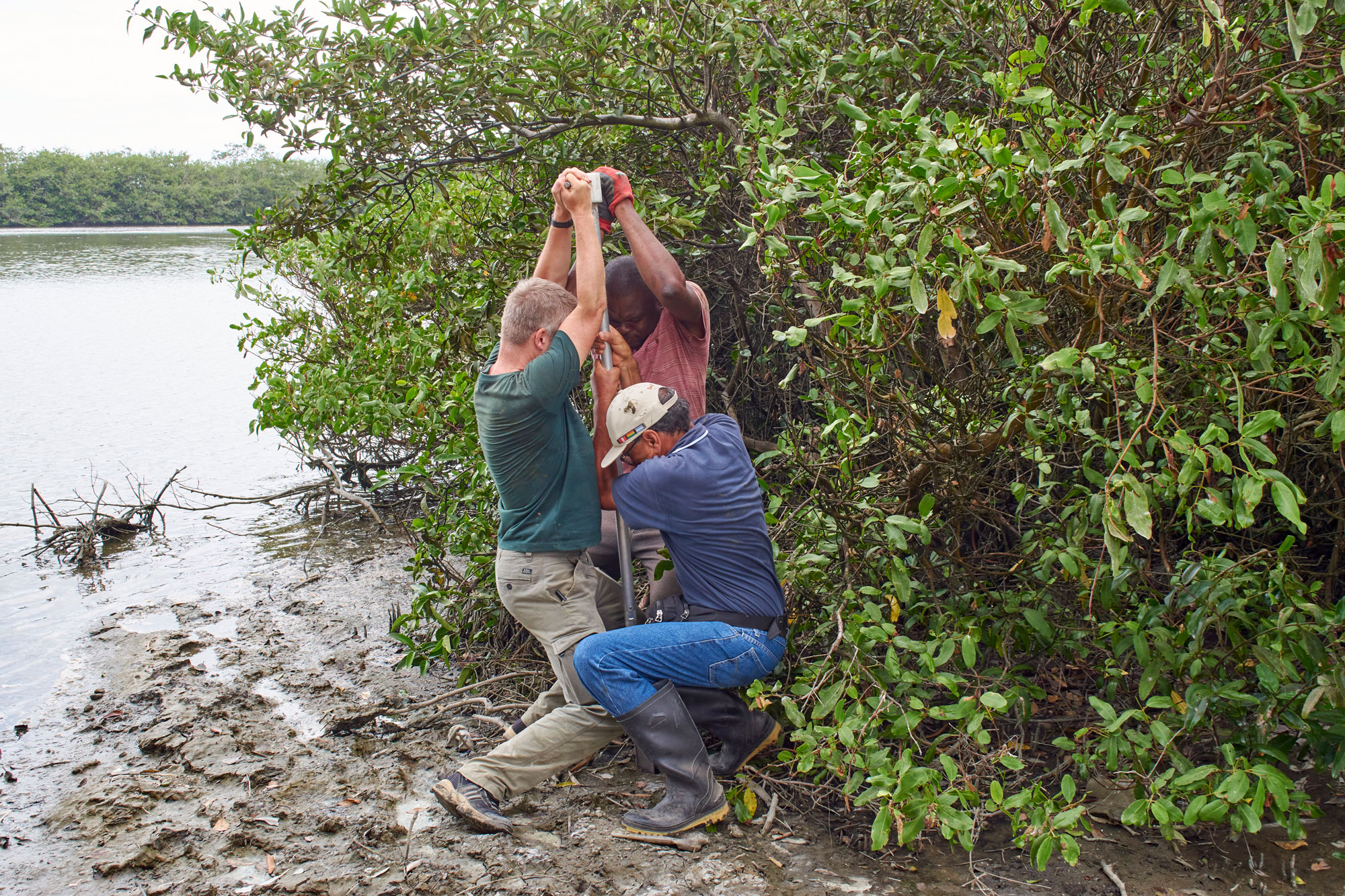
A multi-continental effort extracting core samples for the mangroves of San Pedro de Vice. Photo: Hanlie Malherbe
In parallel, PARAWET consultant Ivonne Vivar achieved much success from her first field campaign characterizing productive activities with a focus on artisanal fishing. Here, I am using the opportunity to share provisional outcomes written by Ivonne.
“Individual surveys were conducted with 80 local users. The outcomes indicated a strong relationship with access to water in the wetland system for their productive activities. In particular, inland fishing is a traditional and essential activity for the local communities as an indispensable source of protein. However, fishing is a complementary activity to activities such as livestock and agriculture. Associated with climate change scenarios, there is an expected increase in irregularities in the water regime leading to more extreme droughts and floods. In fact, 65% of the users perceive that their productive activities are affected by more intense drought seasons leading to diversification activities and, in some cases, migration.
During exceptional El Niño events, temporary lagoons are created increasing the average area of the wetland system up to 120 times. Only during these phases fish are abundant and seasonal. Fishing becomes the main activity for most users, who follow the resource and alternate their fishing activities among various coastal water bodies. Commercialization of fish at the regional scale increases as the main source for their livelihood, which lasts as long as the temporary lagoons exists.”
We are looking forward to learn more about the outcomes from her second field campaign, including her endeavours involving local users to propose adaptation measures and the sustainable management of the wetland system.
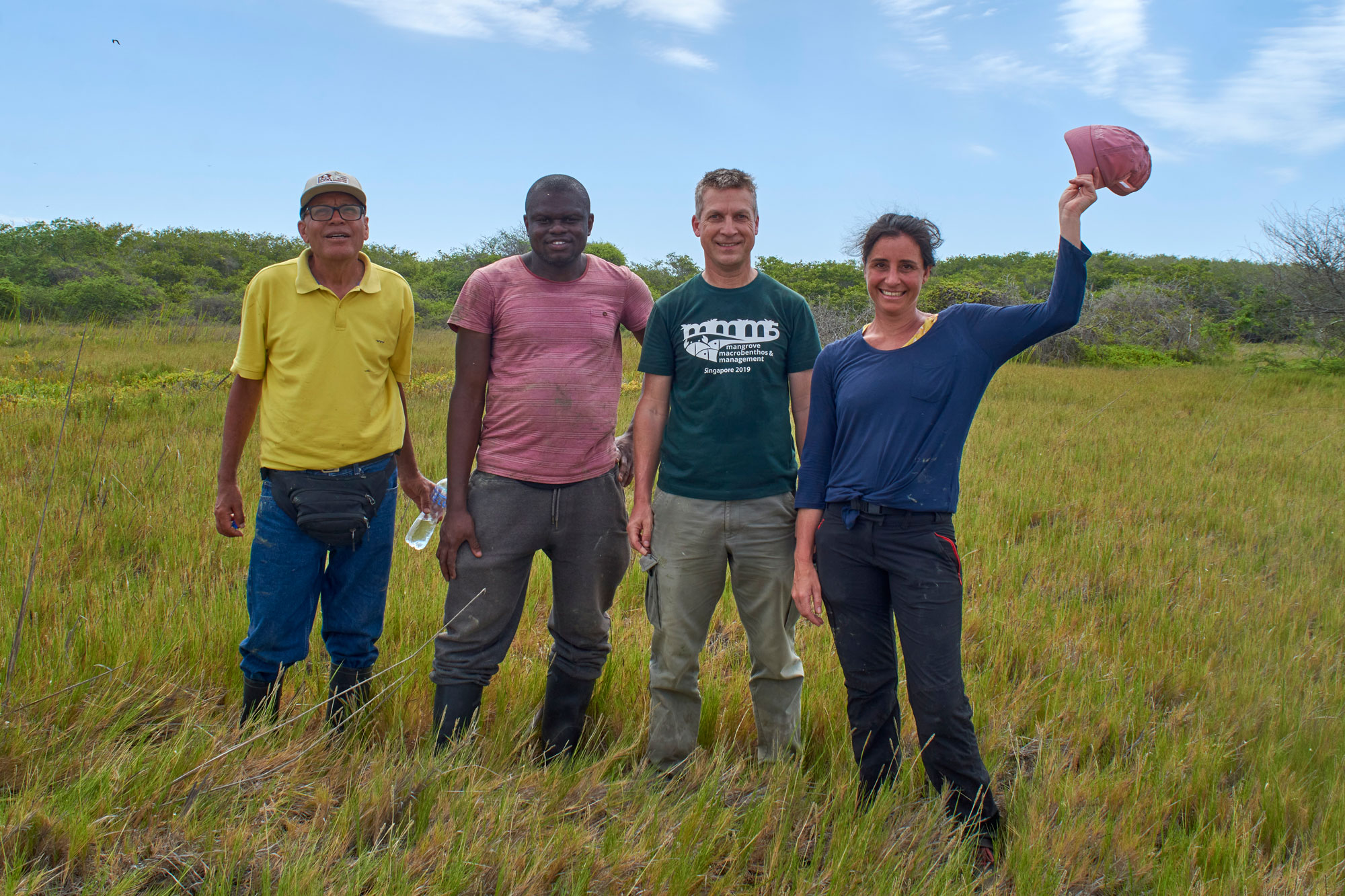
Ending our fieldwork on a good note at the mangroves of San Pedro de Vice. Photo: Our driver Rey
Written by Hanlie Malherbe | Office for Knowledge Exchange | Leibniz Centre for Tropical Marine Research (ZMT)




